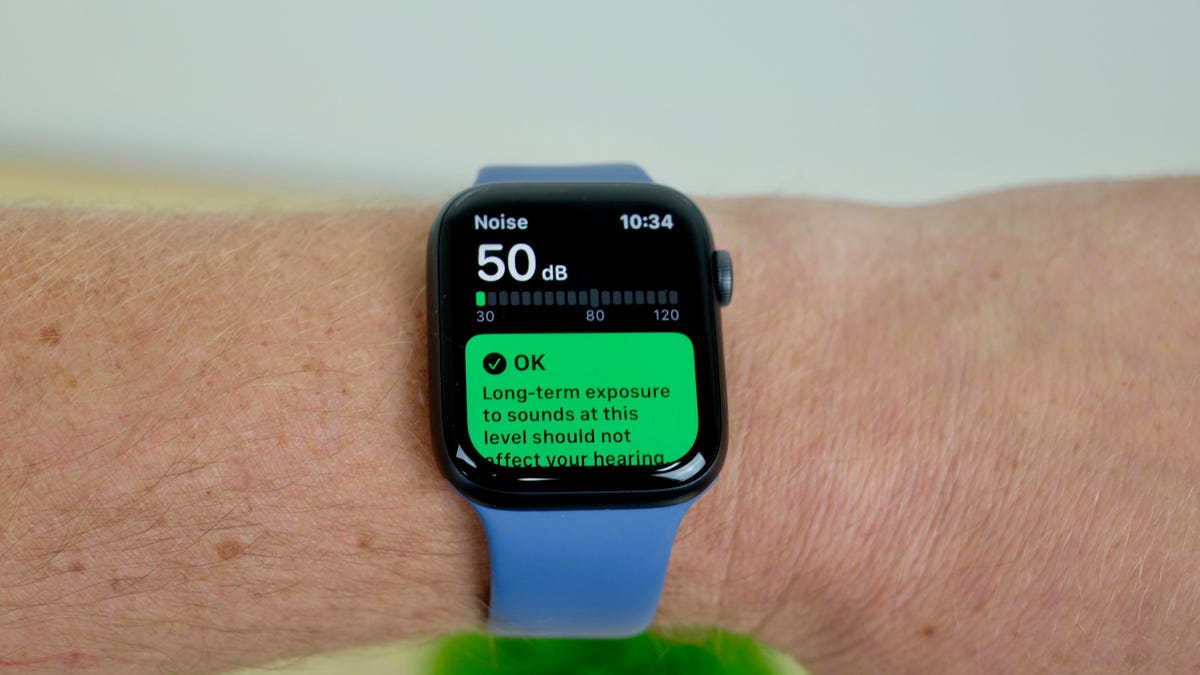About 1 in 3 Adults Exposed to Risky Levels of Noise, Apple Study Finds
The world is loud. For some people, depending on where you live, your job and other factors, it’s even louder. Add loud musical festivals or even your summer workout playlist to equation, and you have ripe pickings for a population study on how noise will affect hearing over time.
Apple, which launched its health study initiatives in 2019 using health data collected from contributing users’ iPhones and Apple Watches, released an update last month on its hearing research, which used data from about 130,000 participants between November 2019 and December 2022. The most recent study update, in partnership with the University of Michigan, looked at sound exposure across the US and Puerto Rico — particularly noises above 70 decibels, which is the level that can increase risk of hearing loss over time.
Read more: Hearing Loss Is on the Rise. A New Wave of Tech Might Help
According to the study, about 1 in 3 adults are exposed to “excessive” noise, or about 77 million adults. The highest percentage of participants in the study who live with excessive noise levels are in Puerto Rico, while the lowest percentage live in Washington, DC.
Strictly numbers-wise, high-population states like California, Texas, New York and Florida had more participants exposed to excessive noise.
Read more: 7 Unexpected Things That May Be Hurting Your Hearing
How too much noise affects health
When someone loses hearing from sound exposure, it typically happens over a prolonged period of time as the nerve cells in the inner ear become damaged. Over time and in tandem with aging, a lifetime of noise exposure can impact someone’s hearing ability.
The US Centers for Disease Control and Prevention has a chart of examples of different decibel levels, typical things that would induce them and when hearing loss would become possible. As a general rule, the more intense the noise (such as an approaching subway, 100 decibels, per the CDC) or a maxed-out volume on your headphones or radio (105-110 decibels), the faster the potential for hearing damage. The CDC notes that for repeated exposure to loud noises, the risk for hearing loss is greater over time if you don’t use hearing protection or give your ears breaks between those exposures.
Beyond hearing loss, noise can impact our health in other ways, including feeling annoyed or irritated by the incessant sound, which can lead to depression or anxiety. Noise pollution, specifically traffic noise, has also been linked to an increased risk of heart disease, even when controlled for other factors that can harm heart health, including air pollution.
Read more: Everything You Need to Know About Buying Over-the-Counter Hearing Aids
Uneven impacts of loud noise mirror other public health gaps
Some people may have a harder time escaping loud noise due to where their neighborhood is relative to a noisy road or an airport, or what they do for work. This can create an overlap with other types of pollution and injustice that can have uneven health impacts based on socioeconomic status and more.
“These demographic factors have already been shown to be associated with levels of air pollution, and our study suggests the same may be true for noise pollution,” said Richard Neitzel, principal investigator of the Apple hearing study and associate professor of environmental health sciences at the University of Michigan School of Public Health.
“As we continue our research, we hope to use this data from the Apple hearing study to inform health policy and hearing health initiatives.”
For all the latest world News Click Here

